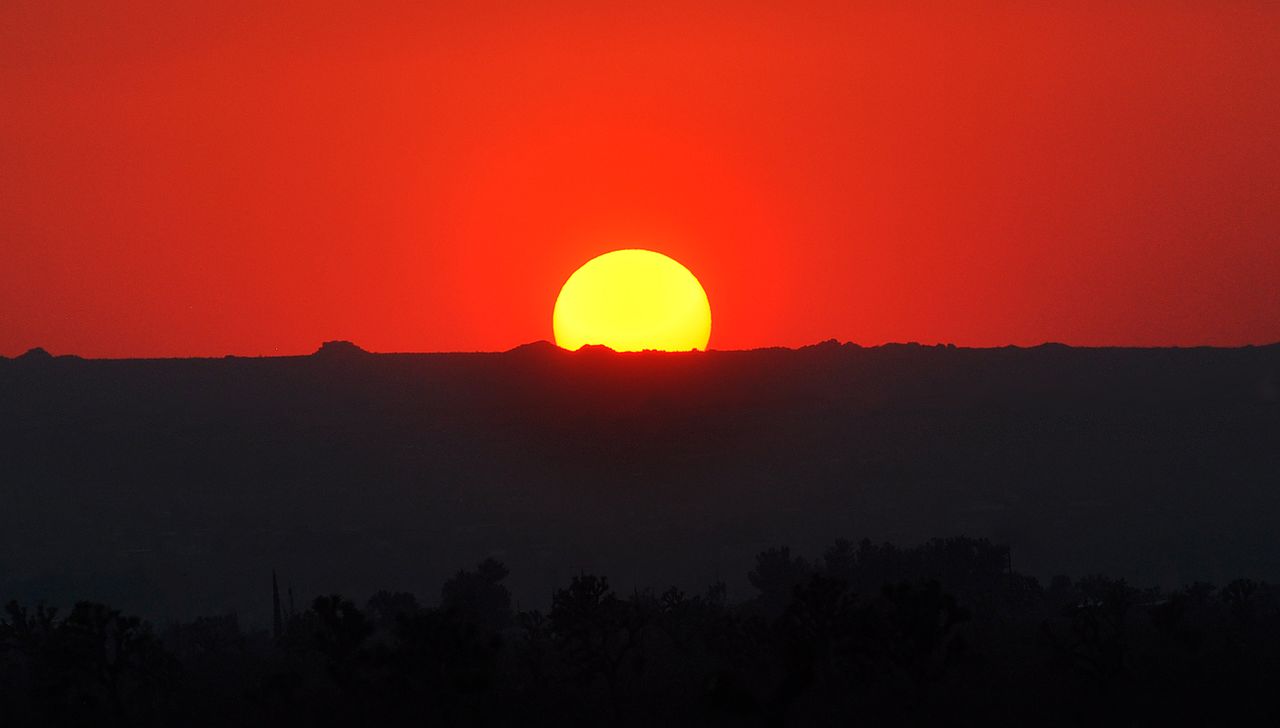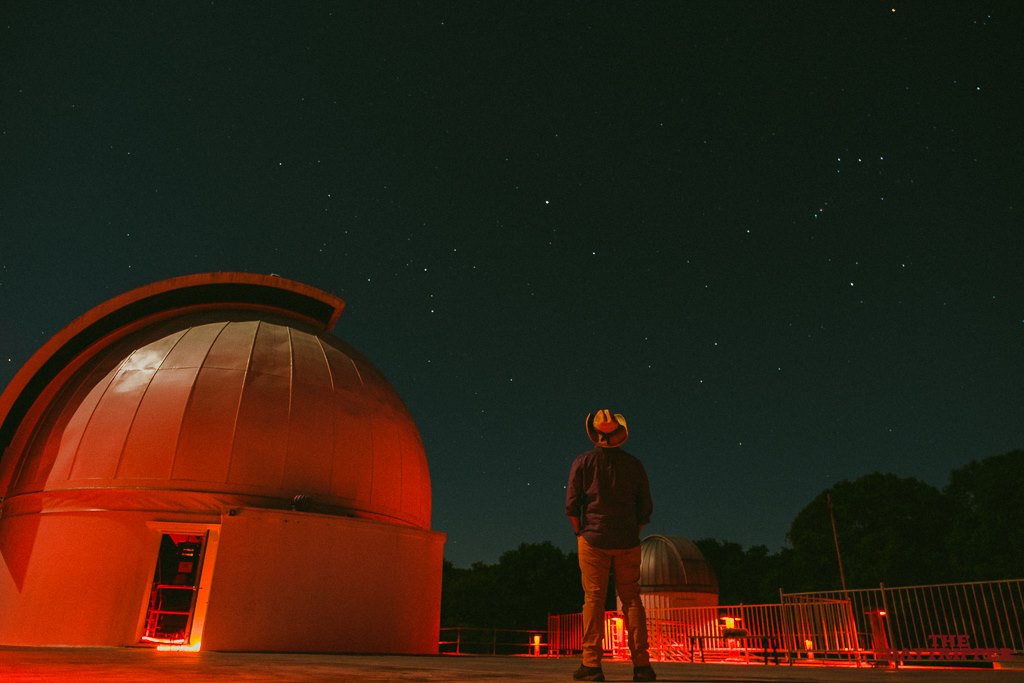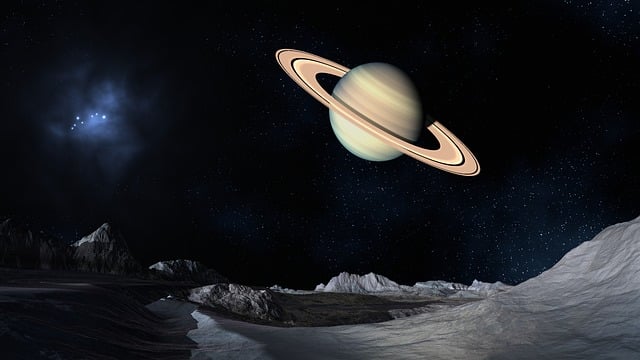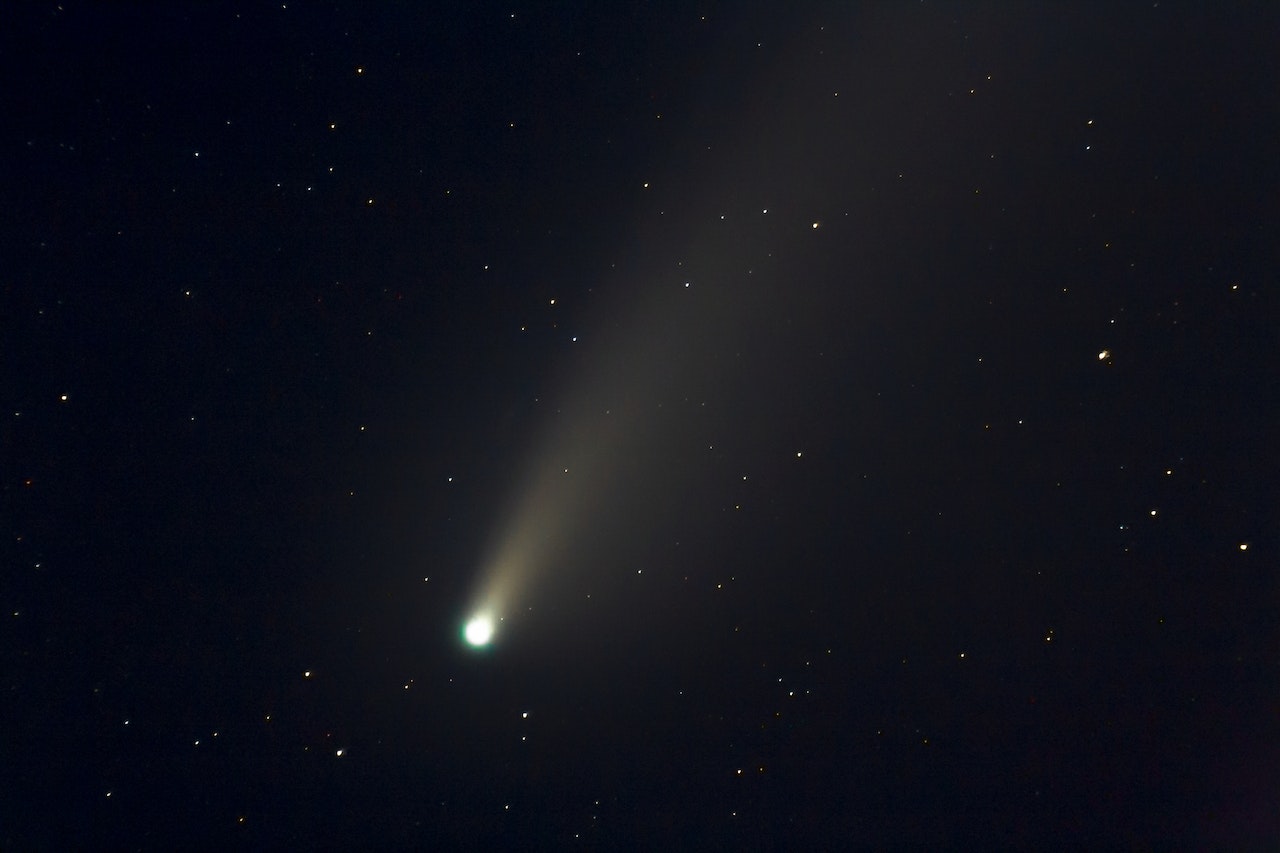Can the stars tell you about your future? No. But our resident astronomer James Wooten can tell you what stars to look for in the future!
This December is an action packed month, celestially speaking. First off, we have a comet approaching, followed by a whole lot of meteors. Not happy news for our resident dinosaurs, but for everyone else it’s going to be tons of fun. We also have the Winter Solstice coming up, which although it is the shortest day of the year, will not seem all that short.
Wondering why? James explains below!
And don’t forget all the constellations and planets to look out for in the night sky this month. We have all you need to know below.
So without further ado, here’s James’ guide to the sky happenings of December 2018:

This star map shows the Houston sky at 8 pm CST on December 1, 7 pm CST on December 15, and dusk on December 31. To use the map, put the direction you are facing at the bottom.
The Summer Triangle sets in the west. Watch for the Great Square of Pegasus almost overhead at dusk now and in the west by Christmas. Taurus, the Bull rises in the east. Look for the Pleiades star cluster above reddish Aldebaran. Dazzling Orion, the Hunter rises shortly after dusk (by month’s end, it is already up at dusk). As Orion enters the evening sky, we transition from the relatively dim evening skies of autumn to the brilliant stars of winter. We are beginning to face away from the center of the galaxy, looking at stars behind us in our own part of our galaxy (the Orion Spur).
Saturn leaves the evening sky this month. It remains low in the southwest at dusk for now, but it sets earlier and earlier each night until it is lost in the Sun’s glare after mid-month. How long can you follow it? Saturn is behind the Sun (and thus utterly invisible to us) right after the New Year.
Mars remains in the south at dusk. Although now considerably dimmer than in July (and gradually fading), Mars still outshines most of the stars in the December evening sky.
Venus is now fully established as the ‘morning star’. Face southeast at dawn look for the brightest thing there, outshining the stars and all other planets.
Jupiter emerges out of the Sun’s glare and into the morning sky this month. Face southeast at dawn to find it.
Moon Phases in December 2018
New Dec. 7, 1:20 a.m. 1st Quarter Dec. 15, 6:49 a.m.
Full Dec. 22, 11:49 a.m. Last Quarter Dec. 29, 3:34 a.m.
Winter Solstice
At 4:22 pm on Friday, December 22, the Sun is overhead as seen from the tropic of Capricorn, the farthest point south where this is possible. That’s because Earth’s North Pole is now tilted as far as possible away from the Sun. That’s why this is our winter solstice, the day when we have more night and less daylight than any other. Below the equator, this is the summer solstice because the South Pole is tilted towards the Sun as much as possible.
You will notice, however, that sunset on New Year’s Eve is up to ten minutes later than on December 1. Why, if the 31st is closer to the solstice? Although the shortest day (least daylight) occurs on December 21, the earliest sunset occurs for us about December 1. This is because the Sun’s apparent position in our sky varies like a sine wave; there is little difference in the Sun’s apparent height for about a month before and after the solstice. Due to Earth’s tilt, the Sun does indeed take a shorter, lower path across the sky on December 21 than on December 1, but only by about 1.5 degrees (your pinky at arm’s length blocks one degree). Meanwhile, Earth is slightly accelerating as it approaches perihelion just after the new year. This makes both sunrise and sunset happen a little later each night during December. Near the solstice, this small effect can dominate. Since most of us sleep through sunrise and watch sunset, days will seem to lengthen from December 1-21 when they are in fact still getting shorter.
A Comet is Coming!
A naked eye comet is in our skies this month. For those who remember Comets Hyakutake and Hale Bopp in the ‘90s, Comet Wirtanen will be nowhere near that bright. Still, Wirtanen could reach a magnitude of 3 at its closest approach to Earth around December 16. That would put it above the threshold of naked eye visibility. A finder chart is here:
https://www.space.com/42575-see-comet-64p-wirtanen-earth-flyby-december-2018.html
As it happens, Wirtanen is part of the Jupiter family, a group of comets that go out only about as far as Jupiter’s orbit before falling back towards the Sun. Thus, Wirtanen completes an orbit in only 5.4 years, as opposed to 76 for Halley and thousands of years for long period comets. Wirtanen is so small and intrinsically dim, though, that it never appears really bright despite hanging around near the inner solar system. In 2018, however, Wirtanen happens to pass closer to Earth—only about 30 times as far away as the Moon. That’s how this tiny comet can become visible to the unaided eye.
There are a couple of caveats, however. First, comets are diffuse sources of light rather than point sources like stars. That makes comets more easily washed out by light pollution than stars of the same brightness. The farther you are from city lights, the better the comet will look. Also, the actual brightness of a comet depends on how much gas and dust are released as the comet approaches the Sun—something astronomers can’t predict precisely. The actual observed brightness could differ from what is advertised.
Geminids at the George!
George is also open on Wednesday night, December 12, until 2 am on Thursday, December 13, for viewing the Geminid Meteor Shower. Along with the Perseids in August, the Geminids produce on average one meteor per minute, more than other showers. If you’d like to join us at George, keep in mind a) this is weather dependent, as we can ‘t see meteors through clouds, and b) one meteor per minute is a lot of meteors, but one minute is a long time if you spend that minute watching for something to happen. Some are disappointed that they don’t see meteors constantly shooting all over the sky. That, however, would be a meteor storm, not a shower.
Clear Skies!











